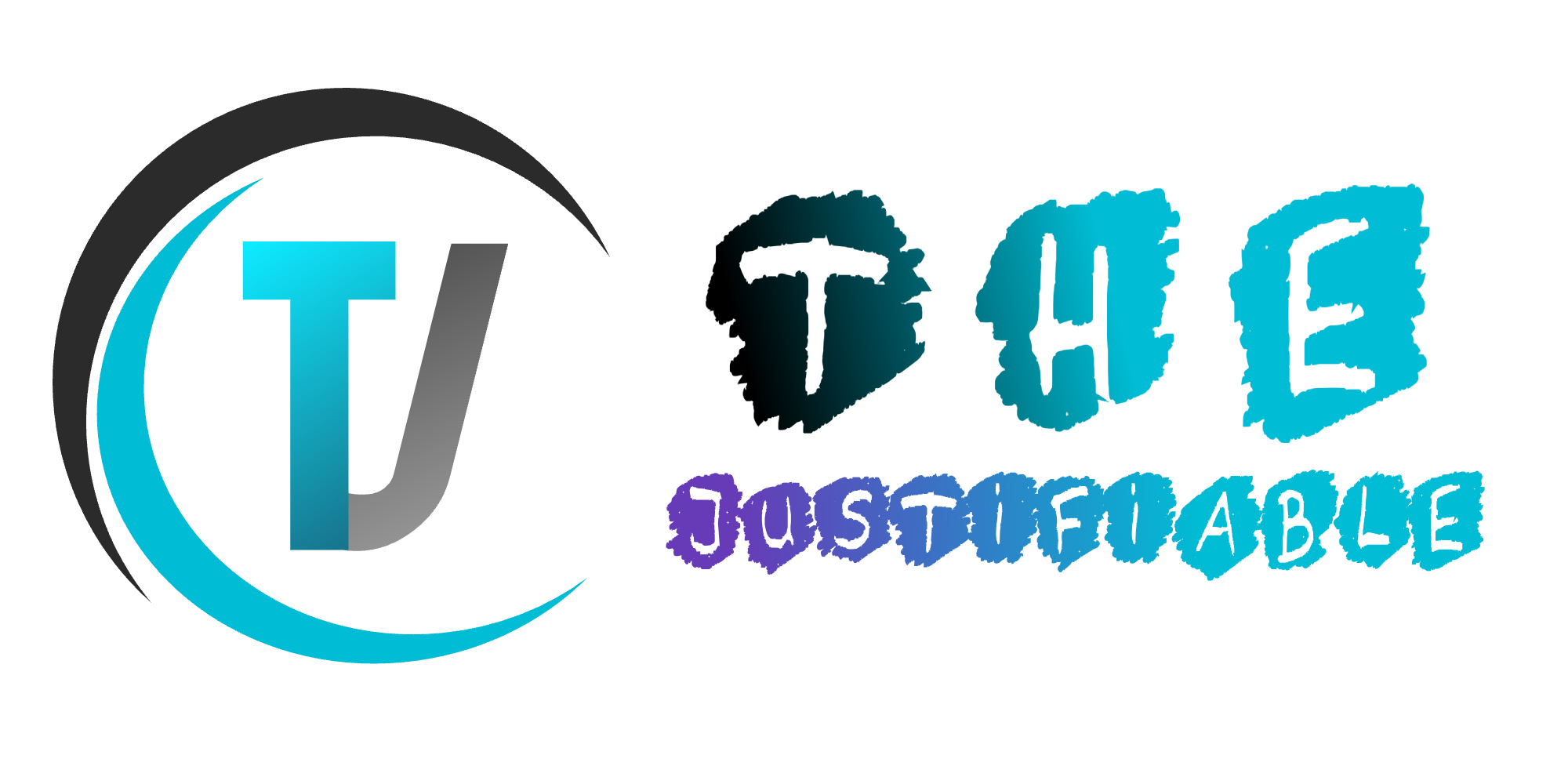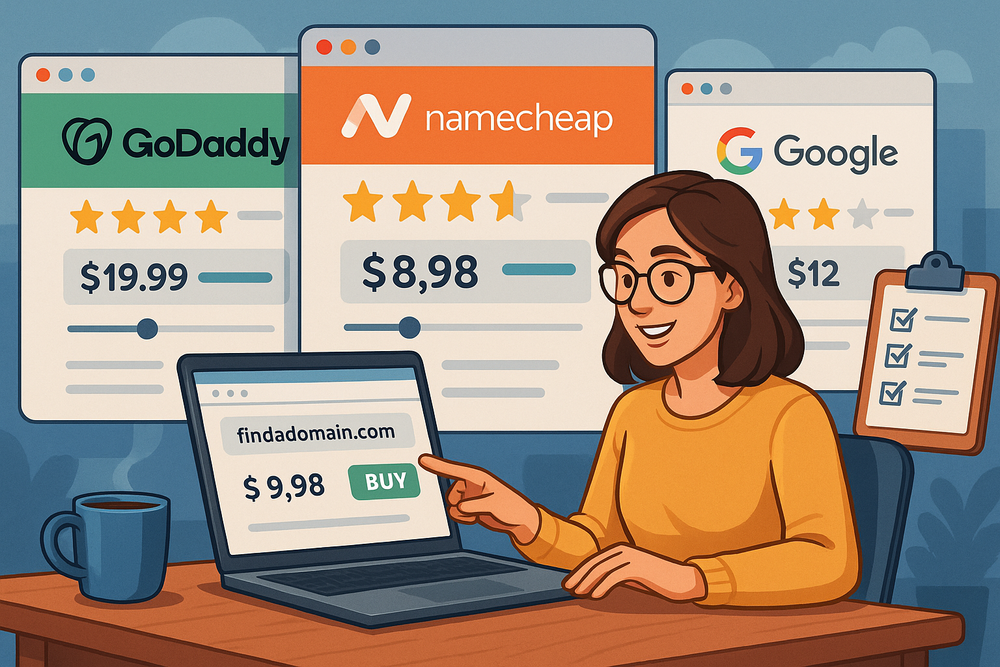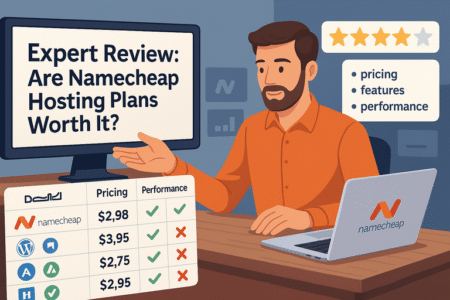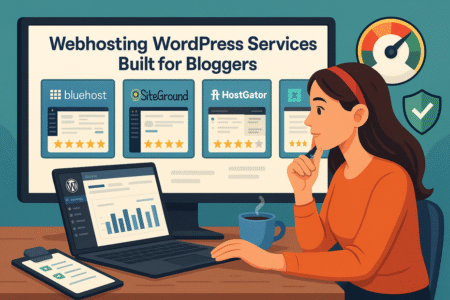Table of Contents
If you’ve ever tried to buy domain names cheap without ending up with a shady registrar or hidden fees, you know it’s not as simple as it sounds. How do you find a deal that’s actually safe and worth keeping long-term? Which registrars give you a fair price without sacrificing security, support, or ownership rights?
In this guide, we’ll break down the platforms that offer both affordability and trust, so you can register your domain without overpaying or taking unnecessary risks.
Understanding What Makes a Domain Purchase Safe and Affordable
Buying a domain name might seem as simple as typing it into a search bar and hitting “Buy Now,” but that’s exactly how people end up overpaying or getting trapped with a bad registrar.
If you want to buy domain names cheap and still sleep at night knowing your investment is secure, you need to look at three things: reputation, pricing transparency, and support quality.
Importance of Registrar Reputation and Security Measures
A low price is tempting, but if the registrar has a history of suspending domains without reason, upselling aggressively, or making transfers difficult, that “deal” can turn into a headache. A reputable registrar will:
- Clearly state ownership rights (you should be the legal owner, not them).
- Offer free or affordable WHOIS privacy to protect your personal info from spammers.
- Include strong account security like two-factor authentication (2FA) to keep hackers out.
I’ve seen people skip these basics and lose domains because a shady registrar simply wouldn’t release them. My advice? Spend a little more on a company with a proven track record rather than gambling on an unknown name with flashy discounts.
How Pricing Models and Hidden Fees Impact Long-Term Costs
Registrars know you’re comparing prices, so they often lure you in with $0.99 first-year offers. What they don’t always tell you is that renewals could cost $15, $20, or even more per year. You might also find:
- Separate charges for WHOIS privacy after the first year.
- Fees for transfers out (yes, some try to make you pay to leave).
- Costly “premium” DNS upgrades that other registrars include for free.
A cheap first year isn’t bad if you know the renewal cost and plan for it. I suggest mapping out three years of ownership costs before buying — you’ll see the real price picture.
Evaluating Customer Support Before Committing
Domain issues often pop up at the worst time — your site’s down, email’s failing, or you’re locked out. That’s when fast, competent support matters. Look for:
- 24/7 live chat or phone support, not just ticket-based systems.
- Support reps who can handle technical issues, not just sales questions.
- A solid track record of solving problems without weeks of back-and-forth.
If you can’t reach someone during a sales inquiry, imagine how hard it’ll be when you’re in an emergency. I’d rather pay an extra dollar a year than risk downtime while waiting days for a reply.
Namecheap – Affordable Pricing with Reliable Protections

Namecheap is one of those rare registrars that actually delivers on the “cheap and safe” promise without a lot of fine print. I’ve used them for multiple domains over the years, and they’ve consistently struck the right balance between cost, security, and ease of use.
Key Features That Make Namecheap a Trusted Option
Namecheap’s interface is clean and straightforward — no constant pop-ups trying to upsell you on extras you don’t need. They also include free WHOIS privacy for life, which saves you around $10–15 per year compared to registrars that charge for it. Security-wise, they offer 2FA and account alerts to keep your domains protected.
They also make transfers painless. You can unlock your domain, grab the authorization code, and move it without begging support for permission — which, trust me, is a rare courtesy in the domain industry.
Pricing Breakdown for Common Domain Extensions
Namecheap’s pricing is transparent and competitive:
- .com – Around $9–$10/year (renewal prices stay reasonable).
- .net – Usually $11–$12/year.
- .org – Typically $9–$10/year.
Promotions happen often, especially for less common TLDs like .io, .store, or .online. But even when deals end, their renewals aren’t outrageously marked up.
If you’re buying in bulk, their discounts kick in automatically. I’ve grabbed 10+ domains at a time and seen a noticeable drop in per-domain cost.
Security Add-Ons and Freebies That Increase Value
Aside from free WHOIS privacy, Namecheap throws in extras that save money and stress:
- Free SSL certificate for the first year.
- Basic DNS hosting at no extra charge.
- Domain locking to prevent unauthorized transfers.
They also have an uptime monitor and email forwarding included — small touches that other registrars nickel-and-dime for. In my experience, these add-ons make the real difference between a registrar that just sells you a domain and one that helps you protect and use it effectively.
GoDaddy – Popular but Price-Sensitive Choice
GoDaddy is probably the most recognizable name in the domain world, but that brand recognition comes with a split personality: they can be both a great deal and a sneaky upcharger depending on how you use them.
If you know the tricks, you can buy domain names cheap through GoDaddy — but you also have to stay sharp to avoid paying more than necessary in the long run.
When GoDaddy Offers the Best Deals on Domains
GoDaddy shines for first-time purchases when they’re running aggressive promo codes. I’ve grabbed .com domains for under $2 with these deals, and they occasionally bundle domains with hosting or website builder plans for even less.
The catch? Those ultra-low rates are usually just for the first year, and often limited to one domain per account. If you’re looking for a quick project or testing an idea, that’s fine. But for long-term brand domains, I recommend doing the math for at least three years of ownership before committing.
One pro tip: if you add a domain to your cart and don’t check out, you might get an email within a few days offering you a better price. It’s classic e-commerce psychology, but it works in your favor.
Renewal Costs and How to Avoid Price Spikes
GoDaddy’s renewal prices are their biggest “gotcha.” A .com might jump from $2 in year one to $20+ in year two. Privacy protection, which is free at many registrars, is also an extra cost unless you catch it on sale.
To avoid getting burned:
- Always check the renewal column in your cart before buying.
- Consider registering for multiple years during a promo — GoDaddy occasionally lets you lock in the discounted rate for up to 2–3 years.
- If you miss the window, transfer the domain to a cheaper registrar before renewal comes due.
I’ve done the transfer method multiple times and saved over 50% compared to paying GoDaddy’s standard renewal rates.
Security, Privacy, and Support Considerations
GoDaddy offers solid security options like 2FA, account alerts, and domain locking, but you’ll often find some features behind paywalls. For privacy, you’ll need to either pay extra for full WHOIS protection or watch for periodic “free privacy” promotions.
Support is available 24/7 by phone and chat, and in my experience, they’re quick to answer. That said, GoDaddy’s support often doubles as a sales channel — expect upsell pitches during your call. If you’re firm about only fixing the problem at hand, you can get what you need without buying add-ons you didn’t plan for.
Dynadot – Competitive Rates with Strong Management Tools
Dynadot is one of those registrars that quietly builds a loyal following without flashy ads or gimmicks. They focus on straightforward pricing, clean tools, and strong domain management features — and for anyone running multiple domains, that’s a big deal.
Domain Search and Bulk Purchase Benefits
Their search tool is fast, uncluttered, and doesn’t bury you in irrelevant upsells. If you’re in the habit of buying domains in batches (like for niche projects or defensive brand protection), Dynadot really shines.
Bulk purchasing is where they stand out: once you hit certain spend thresholds in a year, you automatically qualify for discounted “bulk” or “super bulk” pricing across all domains, new or renewing. That can bring a .com down to the $7–$8 range, which is hard to beat.
Even better, they have a “bulk search” function where you can paste in a list of names and instantly see availability and pricing across multiple TLDs — a time-saver if you’re hunting for multiple variations of a brand.
Pricing Comparison Across Popular TLDs
Dynadot’s regular prices are competitive even without bulk rates:
- .com – Around $9–$10/year.
- .net – Roughly $11/year.
- .org – Around $9/year.
They also run seasonal promos that drop certain TLDs to rock-bottom prices. I’ve picked up .xyz domains for under $2 and kept them affordable at renewal because their standard rates are fair.
One thing I appreciate is that renewal prices are clearly displayed during checkout — no digging through terms to find them.
Built-In Security Features That Protect Your Investment
Dynadot includes free WHOIS privacy on most eligible domains, so your personal contact info isn’t publicly available. They also offer account security extras like 2FA and IP address whitelisting — a feature that blocks logins from unapproved IPs, which is especially useful for high-value domains.
For portfolio owners, their domain folders and permission controls make it easy to separate and delegate management tasks without handing over full account access. That’s something you usually only get from enterprise-level registrars.
Overall, Dynadot is the kind of registrar that doesn’t waste your time — they keep pricing honest, tools functional, and security strong without trying to squeeze you for extras you don’t need.
Porkbun – Low-Cost Domains with All-Inclusive Perks
Porkbun is the registrar I recommend to people who are tired of hidden fees and “intro price” games. Their branding is quirky (yes, there’s a pig logo), but behind that playful image is one of the most transparent, all-inclusive pricing models I’ve seen in the industry.
If your main goal is to buy domain names cheap without worrying about upsells, Porkbun should be on your shortlist.
Why Porkbun Stands Out for Budget Buyers
The first thing you notice is how clean and honest their pricing page is. No bait-and-switch — the price you see for year one is exactly the price you’ll pay for renewals. This means you can budget long-term without fear of a sudden jump.
They also tend to be the cheapest on many lesser-known TLDs. I’ve seen .tech, .design, and .cloud go for half the price of competitors. For someone experimenting with brandable names or niche projects, that adds up.
Even their checkout is refreshingly simple — you won’t be hammered with pop-ups for hosting, email, or “premium security” you didn’t ask for.
Transparent Pricing Without Hidden Fees
Porkbun’s .com domains typically hover around $9/year, renewals included. They also don’t nickel-and-dime you for features that are essential elsewhere. WHOIS privacy, email forwarding, SSL certificates — all included in the price.
Some registrars make you pay $10+ a year for WHOIS privacy alone, so the fact that Porkbun bakes it in is a big win for both your wallet and your privacy.
One tip: if you’re transferring domains in from another registrar, Porkbun often throws in a free renewal year as part of the process — essentially extending your ownership without extra cost.
Free WHOIS Privacy and SSL Inclusions
With Porkbun, WHOIS privacy is automatic. You don’t have to click a box or remember to add it; it’s just there. Same with free SSL certificates through Let’s Encrypt, which means your website can run securely without paying extra for HTTPS.
For small businesses or personal sites, this combination of free privacy and SSL removes two recurring costs that can easily add $20–$40 per year per domain elsewhere.
Hover – Simple Buying Experience with Privacy Built-In
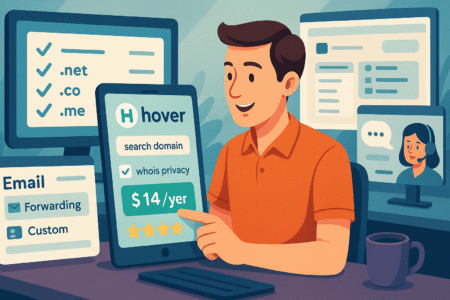
Hover is the registrar I recommend to people who want a no-nonsense, “just get me the domain” experience. They’re not the cheapest on paper, but the value is in the lack of nonsense and the lifetime perks you get.
Who Hover Works Best For
If you hate cluttered dashboards and upsells, Hover will feel like a breath of fresh air. Their focus is purely on domain registration and email — no hosting, no site builders, no distractions. This is perfect for someone who already has hosting elsewhere and just needs a registrar they can trust.
I also recommend Hover to people managing domains for clients, because their UI is clean enough for even non-techy folks to navigate without breaking something.
Pricing and Value-Added Services
Hover’s .com domains usually run about $13–$15/year, but that price includes WHOIS privacy and easy DNS management. They also offer email forwarding and custom email hosting at fair rates if you want to keep everything in one place.
They often run promotions for less common TLDs like .me, .blog, or .co, which can be good opportunities to grab short, brandable names.
Support Quality and Domain Management Tools
Hover’s support team is one of the least pushy in the business. You can call or email them without worrying about getting pitched on upsells. In my experience, they’re knowledgeable and quick to fix technical issues — a rare combo.
Their management tools are straightforward, with bulk editing for DNS, easy transfers, and the ability to organize domains into categories for quick access. For anyone juggling multiple projects, that simplicity saves time and mistakes.
Tips for Getting the Lowest Price Without Sacrificing Safety
Buying domains cheap isn’t just about picking the right registrar — it’s about timing, strategy, and avoiding the traps that turn a good deal into an expensive regret.
Timing Your Purchase for Discounts and Promotions
Registrars run seasonal promos tied to events like Black Friday, Cyber Monday, and even domain industry events like “Domain Day.” If you can hold off buying for a few weeks, you can sometimes slash your first-year cost in half.
I keep a running “wish list” of domains in a simple spreadsheet so when a sale hits, I can scoop them up fast. This works especially well for non-.com TLDs, which often have deep first-year discounts.
Using Coupon Codes and First-Year Deals Wisely
GoDaddy, Namecheap, and Dynadot all regularly release coupon codes that can knock a few dollars off or even give you a domain for under $1. Just remember — the renewal rate will still apply in year two, so use these deals for short-term projects or be ready to transfer before renewal.
Pro tip: Always search “[registrar name] coupon” before buying. Even a $2 discount adds up if you’re registering multiple domains.
Avoiding Common Scams and Too-Good-to-Be-True Offers
If a registrar’s price is dramatically lower than everyone else’s — especially for a popular TLD like .com — be suspicious. Some shady registrars offer cheap domains but:
- Charge huge transfer-out fees.
- Keep control of your WHOIS info.
- Add “service charges” for DNS changes.
If you’ve never heard of the company and can’t find genuine user reviews, skip it. Saving $3 now isn’t worth losing your domain later.
Long-Term Strategies to Keep Domain Costs Low
Getting a good deal on year one is nice, but real savings happen over years of ownership. If you want to buy domain names cheap and keep them that way, it’s all about being proactive.
Locking In Multi-Year Discounts
Some registrars let you register for up to 10 years in one shot. If you know you’ll keep the domain, this can shield you from price hikes. I’ve done this with client brand domains, and it’s saved them hundreds over a decade.
Dynadot, Namecheap, and Hover all allow multi-year registrations at competitive rates — and you can still transfer later if you want, without losing the time you’ve already paid for.
Monitoring Renewal Dates to Avoid Expensive Recoveries
Letting a domain expire is a rookie mistake — getting it back during the redemption period can cost $100–$200.
I recommend:
- Setting renewal reminders in your phone or calendar at least 30 days out.
- Turning on auto-renew but keeping your payment info up to date.
- Using a single registrar for your main domains to make management easier.
Transferring Domains When Better Deals Appear
You’re never stuck with your current registrar. If you spot a better renewal deal elsewhere — and the new registrar offers the same security and features — transfer your domain. Most transfers add a free extra year of registration, so you save on renewal while switching.
I treat this like refinancing a loan: if I can keep the same quality and security but pay less, I move. It’s not glamorous, but over a dozen domains, the savings stack up fast.

